- Things To Do
- Events
- Food & Drink
-
Places To Go
- Winnipeg
- Churchill
- Eastern Region
- Central Region
- Interlake Region
- Parkland Region
- Western Region
- Manitoba North
- Must-See Destinations
-
Itineraries
- Island Getaway on the Prairies
- Wheat City Wanderings in Brandon
- Escape to the water and the wild
- St. Boniface Winter: Passion and History
- Follow the path to a story in Neepawa
- Unleash your inner Viking this winter
- Explore Clear Lake this winter like never before
- Breathe in the Whiteshell this winter
- Go North for a boreal forest escape
- Treaty Areas
- Where To Stay
- Trip Essentials
- #ExploreMB Blog
Navigation Options
- FREN
- Things To Do
- Events
- Food & Drink
-
Places To Go
- Winnipeg
- Churchill
- Eastern Region
- Central Region
- Interlake Region
- Parkland Region
- Western Region
- Manitoba North
- Must-See Destinations
-
Itineraries
- Island Getaway on the Prairies
- Wheat City Wanderings in Brandon
- Escape to the water and the wild
- St. Boniface Winter: Passion and History
- Follow the path to a story in Neepawa
- Unleash your inner Viking this winter
- Explore Clear Lake this winter like never before
- Breathe in the Whiteshell this winter
- Go North for a boreal forest escape
- Treaty Areas
- Where To Stay
- Trip Essentials
- #ExploreMB Blog
Northern Manitoba’s Most Challenging Trail: The Kwasitchewan Falls Hike.
Posted July 27, 2023 | Author Nadine Girouard
Have you been longing to witness the majestic beauty of Kwasitchewan Falls, Manitoba’s tallest waterfall? If so, read on. This blog post breaks down the trek through Pisew Falls Provincial Park, a haven of natural wonders, and explores the breathtaking landscapes along the Kwasitchewan Falls backcountry trail. As an added bonus, valuable backcountry camping tips help you prepare for an experience that is both safe and unforgettable.
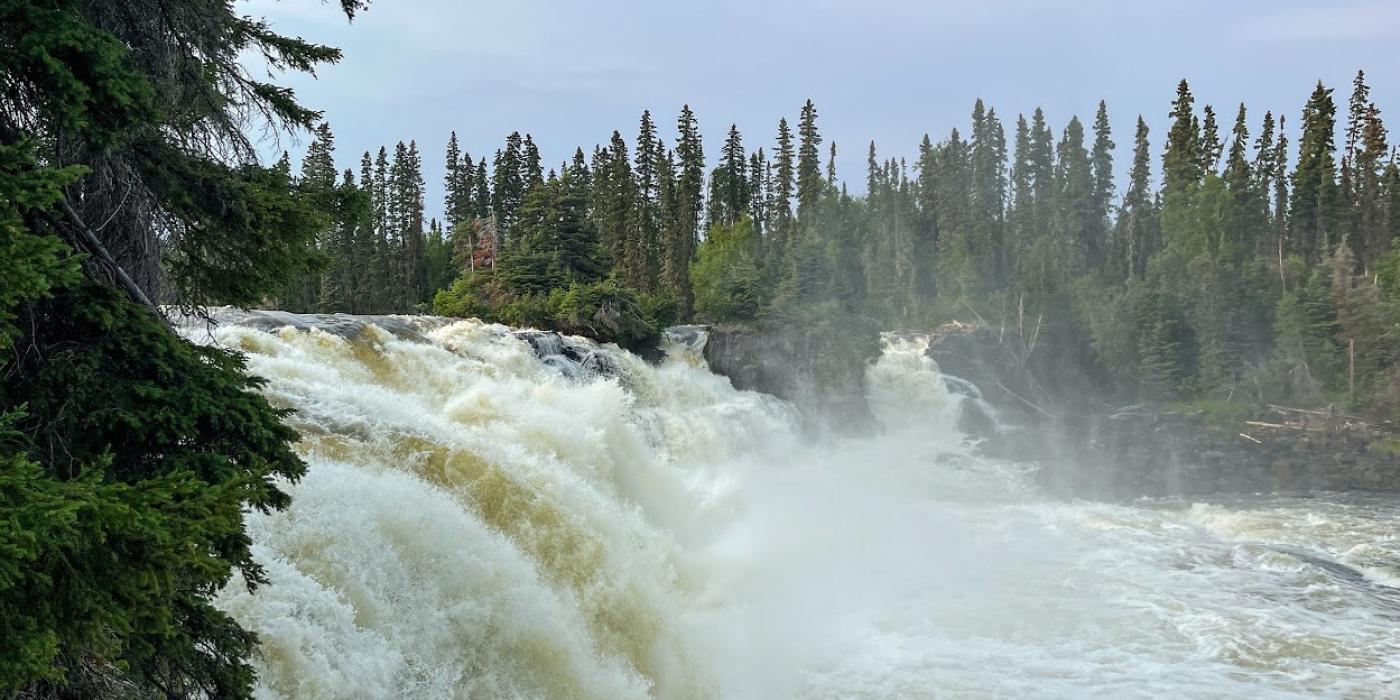
Nadine Girouard
Lace up your hiking boots and dive into the beauty of northern Manitoba's wilderness. When your heart needs adventure, this blog shares everything you need to know for an epic hike to Kwasitchewan Falls.
The starting point: Pisew Falls
Pisew Falls Provincial Park, located off Highway 6 about 75 kms south of Thompson, is a scenic beauty with loads of recreational opportunities. The park features amenities like bathrooms, parking spots, picnic tables and fire pits. A Manitoba Parks pass is required for your vehicle. First off, make sure to check out Pisew Falls (13m), the second tallest waterfall in Manitoba, either before or after hiking Kwasitchewan Falls (14m). Here the Grass River drops and jets down through a gorge. There is a short boardwalk that leads you to a couple observation platforms. This park is still a lovely place to explore even if you don't plan on hiking to Kwasitchewan Falls.
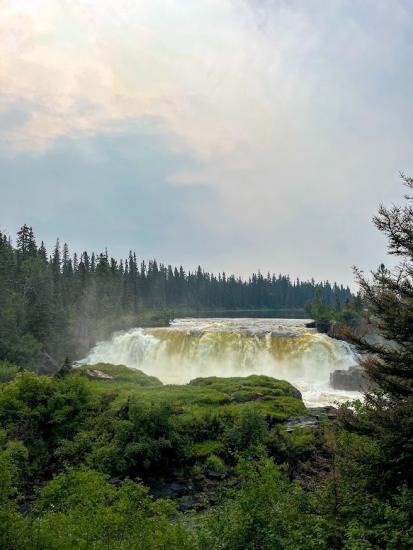
Nadine Girouard
Kwasitchewan Falls facts
The Kwasitchewan Falls trailhead is located in Pisew Falls Provincial Park. It is located a 7-hour drive from Winnipeg and just 45 minutes from Thompson. This trail is rated difficult due to its several challenges - rugged terrain, tangled roots, dense overgrown vegetation, constant need for bushwhacking, and an abundance of fallen trees and debris. Don’t be fooled - this trail demands great skill and determination. It tests the endurance and agility of even the most experienced hikers. Despite Manitoba Parks indicating the trail is 22km - take that distance with a grain of salt. It's recommended to hike out and back on the Grass River side due to reports of lots of fallen trees via the Phillips Lake route. Via the Grass River route, the trail clocks in at nearly 30 km. Hikers walking at a moderate speed should expect the distance from trailhead to the campsite at the falls to take 6-8 hrs. Adventurers can also canoe and portage on this trail.

Nadine Girouard
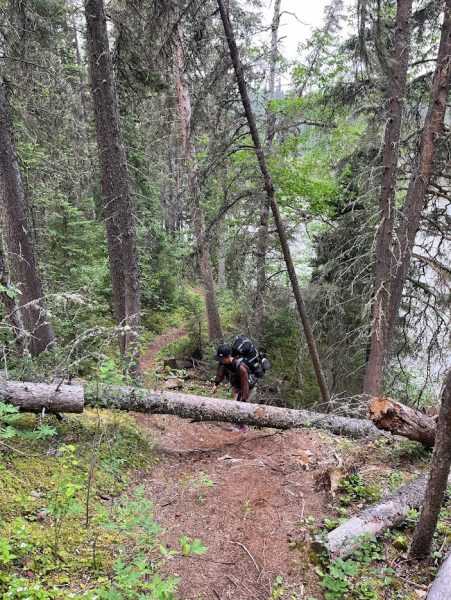
Nadine Girouard
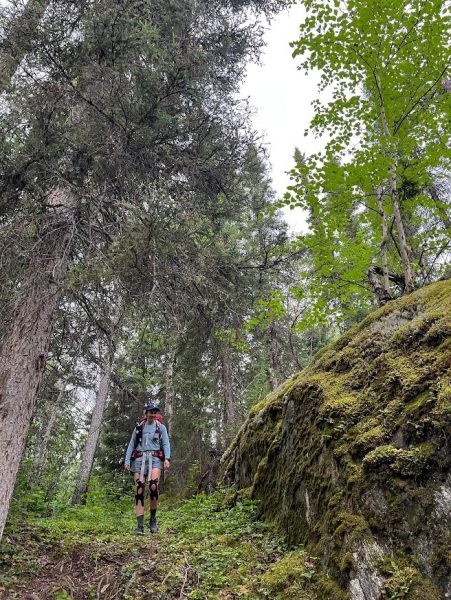
Nadine Girouard
History + scenery = an unforgettable journey
Within 200 meters of the trailhead, you will reach the impressive Rotary Suspension Bridge that stretches 153 feet across the Grass River. Constructed in the late 90s, this remarkable bridge was a community effort of numerous individuals, businesses, and groups in the north. It is definitely worth visiting, even if you don't plan on hiking the entire Kwasitchewan trail. This trail traces the path of the Grass River, which played an important role in the fur trade route known as the Upper Track during the late 1700s. Generations of Indigenous Peoples had already traversed this route, demonstrating to Hudson Bay Company and North West Company traders that they could access the Saskatchewan River and the vast interior of the west. Competition was fierce along the Grass River during this time, as both companies wanted to gain dominance in the fur trade.
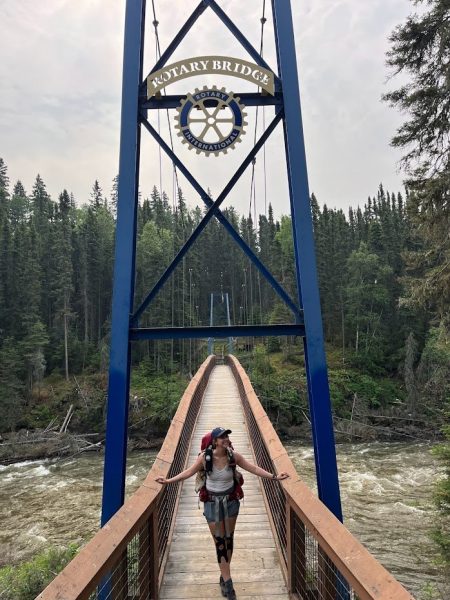
Nadine Girouard

Nadine Girouard
The trail takes hikers along this historic waterway until it reaches Kwasitchewan Falls. Along most of the trail, the serene waters remain in sight, while the boreal forest scenery boasts stands of spruce, pine, tamarack, and poplar trees. The trail is shaded and surrounded by a thriving habitat for birds and forest creatures. Prior to reaching the falls, two sets of rapids add to the photogenic journey.
There is limited water access along the trail as overnight hikers head to the designated backcountry campsites. Fortunately, right where the trail separates into the Phillips Lake and Grass River routes, there is a delightful resting spot where you can take a break, have a snack, and conveniently refill your water supply.
The rugged Canadian Shield terrain offers a very challenging environment with numerous obstacles. Be mindful of your footing. If it rains, the outcrops of granite rock on the trail can be very slippery. It is crucial to be prepared for all weather conditions; pack for both warm and cool temperatures and be ready to combat bugs along the way. Keep an eye out for natural treasures along the trail - wild raspberries and strawberries grow in early summer. When you arrive, the designated campsites are located on the north loop of trail at the top of the falls. Conveniently right by the water, the sites all have fire pits.
On the north loop of the trail is where you will find a makeshift helicopter pad for those hikers or paddlers who need to be rescued. Two bear boxes to store food are also in this area, but surprisingly far from the campsites.
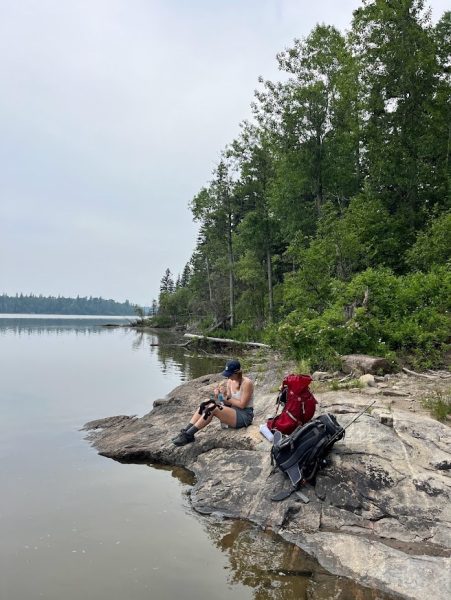
Nadine Girouard
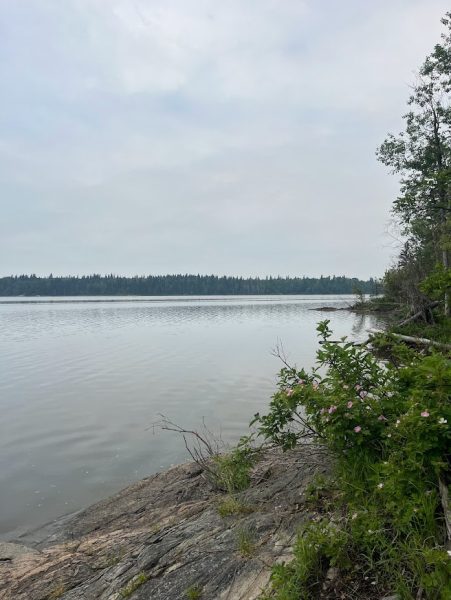
The main attraction
Once you lay eyes upon the majestic and awe-inspiring sight of Kwasitchewan Falls, Manitoba's tallest waterfall, all the challenges faced along the trail become insignificant. The sheer beauty and grandeur of the waterfall make every step taken well worth the effort. Even before setting eyes on Kwasitchewan Falls, hikers hear the resounding roar of the water. The sense of anticipation is profound. Even after a demanding day of hiking, the sight of the waterfall was breathtaking and incredibly fulfilling. It creates a surge of excitement that any exhausted hiker will find hard to contain.
All hikers should heed the safety warnings from Manitoba Parks: stay on designated trails. Despite the urge, do not go off trail and approach the falls. Falling from high, slippery rocks and strong water current pose real danger.
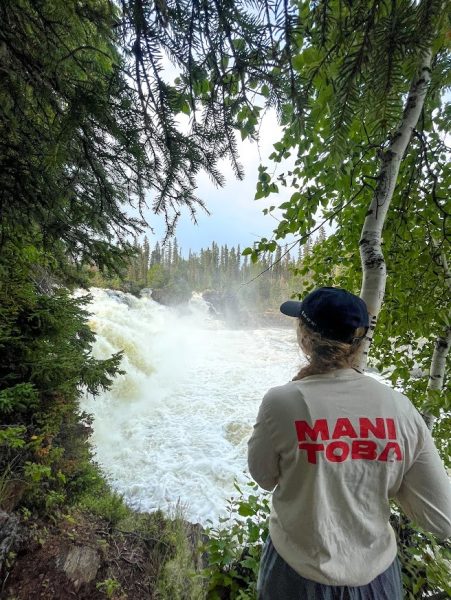
Nadine Girouard
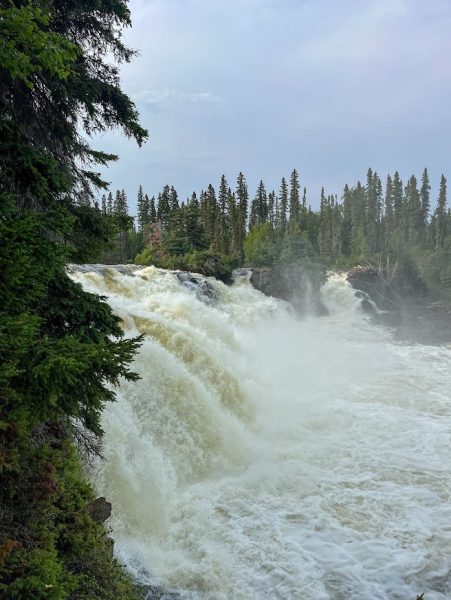
Nadine Girouard
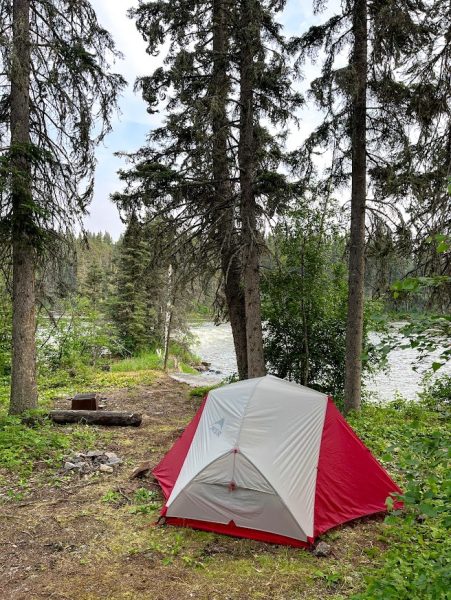
Nadine Girouard
Backcountry Camping Tips
- Pack the 10 hiking essentials: navigation, flashlight, sun/bug protection, first aid, a knife, a fire kit, shelter, food, water, and clothes.
- Carry enough food and water for overnight, even if you don’t plan on staying overnight.
- This is black bear habitat. Bring bear spray and make your presence heard on the trail. Clap and call out "Hey, bear!" to alert them. Do not leave any food scraps or litter behind. Ensure you either have a bear canister or properly hang your food and scented items.
- Cellular service is not dependable on this trail, so it is recommended to bring a satellite messenger. Hikers can rent a SPOT device from Wilderness Supply in Winnipeg, which allows you to keep loved ones informed about location and well-being. It can also provide an SOS signal in case of emergency.
- There are open-air, backcountry toilets near the campsites. If you don't use the outdoor toilets provided, dispose of human waste by digging a cat hole at least 100 metres away from water sources and the trail. Pack out your toilet paper and hygiene products.
- Use a portable stove or one of the fire pits provided at each campsite. Open fires are prohibited and check for fire bans.
- Pack out what you pack in.
Kwasitchewan Falls is a true marvel that should be experienced by every adventurous soul. With its awe-inspiring beauty nestled within Pisew Falls Provincial Park, this backcountry trail offers a journey of a lifetime. As you prepare to embark on this unforgettable adventure, armed with valuable backcountry camping tips, get ready to tick off that bucket list item and create cherished memories amidst the untamed wilderness of northern Manitoba.
Happy Adventuring!

